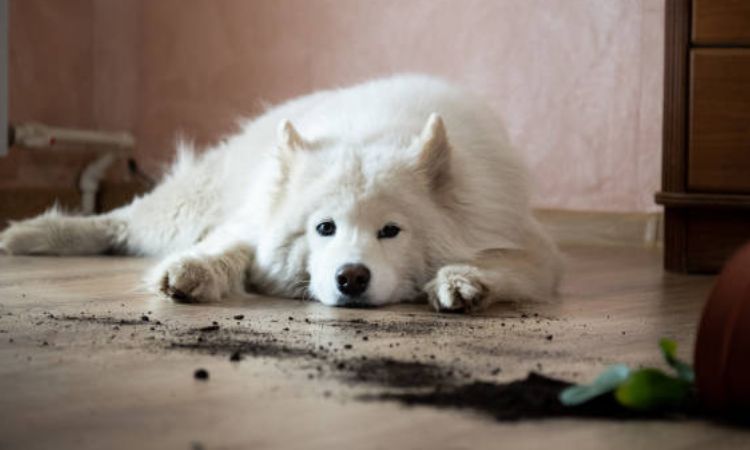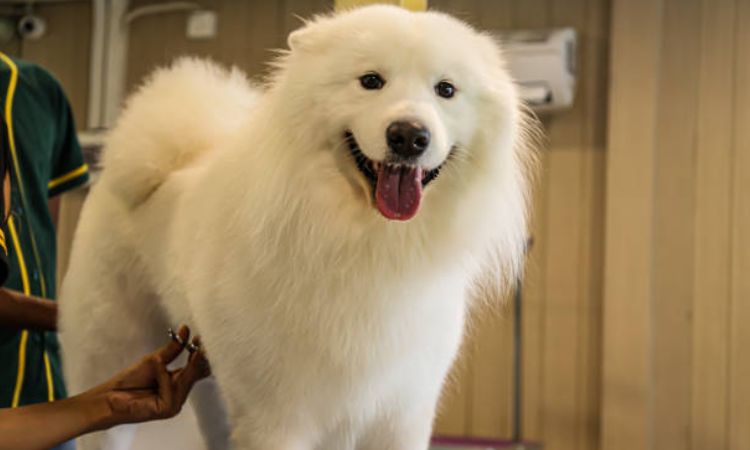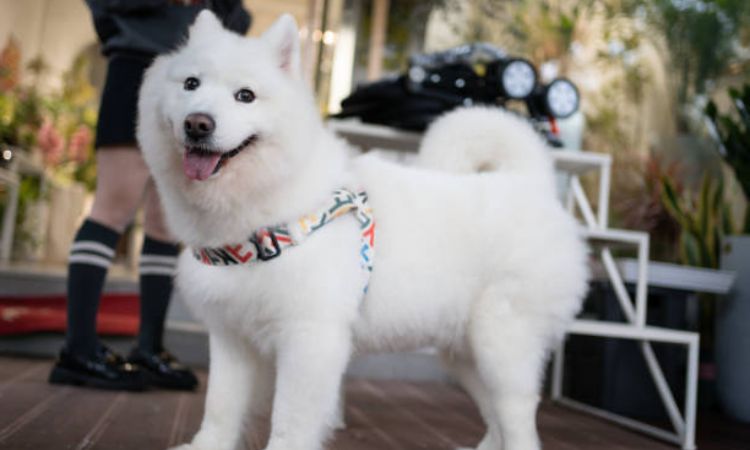Samoyeds are beloved for their fluffy white coats and friendly personalities, making them one of the most popular dog breeds. But if you’re thinking about bringing one home, you might be wondering how much do Samoyeds actually shed? Join Nexus as we explore the truth about their shedding and share tips to help you manage their beautiful fur with ease.

Do Samoyeds Shed?
Yes, Samoyeds shed regularly throughout the year. Their thick double coat consists of a soft, dense undercoat and a coarser outer layer, both of which naturally shed to keep their fur healthy. While some shedding occurs consistently year-round, Samoyeds experience intense seasonal “blow” periods typically twice a year in spring and fall when they shed large amounts of undercoat in preparation for the changing weather. During these blowouts, owners often find clumps of fur coming loose, which requires extra grooming to manage and keep their dog comfortable.
Why Do Samoyeds Shed So Much?
Samoyeds are well-known for their abundant shedding, which can often surprise new owners. This heavy shedding is primarily due to their unique coat structure and their historical adaptation to harsh, cold environments.
Coat Structure
- Samoyeds possess a dense double coat composed of two distinct layers.
- The undercoat is thick, soft, and woolly—almost like cotton—that provides excellent insulation.
- The outer coat consists of longer, coarser guard hairs that protect the undercoat and repel dirt and moisture.
- This combination keeps them warm in freezing temperatures but also means they shed a significant amount of fur.
Historical Adaptation
- Originally bred by the indigenous peoples of Arctic Russia and Siberia, Samoyeds were developed to survive extreme cold and snowy conditions.
- Their thick double coat was essential for insulation against bitter winds and subzero temperatures.
- The dense fur also protected their skin while pulling sleds or herding reindeer in harsh climates.
- This evolutionary background means that their coat is naturally very full and sheds heavily as part of its lifecycle.
Seasonal Shedding
- Samoyeds shed year-round to some degree, but they experience intense seasonal “blowouts,” often called “blizzards” or “whiteouts” by owners.
- These heavy shedding periods typically happen twice a year—usually in spring and fall—when temperature and daylight hours change.
- The seasonal shedding is triggered by the body’s response to these environmental changes, as the dog prepares its coat for warmer or colder weather.
- During these times, the woolly undercoat is shed in large clumps to adjust insulation levels accordingly.
The Samoyed’s prolific shedding results from their thick, double-layered coat designed for Arctic survival and the natural shedding cycles influenced by environmental factors. While their beautiful coat requires regular grooming, this shedding is an essential part of keeping them healthy and comfortable throughout the year.

Shedding Patterns and Frequency
Samoyeds shed hair throughout the year, but their shedding intensity varies with distinct seasonal patterns. Understanding these patterns is essential for managing their coat and maintaining a clean home environment.
- Year-Round Shedding: Samoyeds naturally shed small amounts of hair all year long. This constant shedding helps remove old and damaged fur, keeping their dense double coat healthy and functional.
- Two Major “Blow” Seasons: The most significant shedding events occur twice annually, commonly in spring and fall. These periods, often called “blowouts” or “whiteouts” by owners, involve the rapid loss of the thick woolly undercoat. During these intense shedding phases, large clumps of fur come loose as the dog adapts its coat to seasonal temperature changes—shedding the heavy winter undercoat in spring and preparing a thicker coat for winter in fall.
- Sex-Based Shedding Differences: Shedding frequency can differ between males and females. Typically, intact (unneutered) males tend to have one major shedding cycle per year, while females usually blow their coat twice yearly. This difference is largely influenced by hormonal cycles.
Hormones play a significant role in regulating the Samoyed’s shedding pattern. After spaying or neutering, changes in hormone levels can alter how often and how much the dog sheds. For example, altered hormone levels might reduce or irregularize shedding cycles. Additionally, hormonal fluctuations related to heat cycles or pregnancy in females can temporarily increase shedding.

Managing Samoyed Shedding
Samoyeds are known for their thick, double-layered coats, which naturally shed throughout the year, with intense shedding periods known as “blow seasons.” Managing this shedding effectively requires a consistent grooming routine to reduce loose hair around your home and keep your dog comfortable and healthy.
Regular grooming is essential to control the amount of loose fur. Brushing your Samoyed at least every other day helps remove dead hair before it falls off naturally, reducing the buildup of fur indoors and preventing mats and tangles in the coat. During heavy shedding or blow seasons—typically in spring and fall—it’s best to brush your dog daily to keep up with the increased hair loss.
For optimal grooming, use the right tools designed specifically for double-coated breeds like the Samoyed:
- Slicker brush: Perfect for reaching through the dense outer coat to remove loose undercoat hairs and prevent matting.
- Line comb (Greyhound comb): Ideal for gently working through tangles and smoothing the coat without damaging the hair.
- High-velocity forced-air dryer: This specialized dryer blows out loose fur and dries the thick coat quickly, making grooming more efficient. It also helps loosen mats and dirt trapped in the coat.
It is important to never shave a Samoyed’s coat. Despite their thick fur, their double coat provides natural protection against sunburn and overheating. Shaving can actually make them more vulnerable to heat and skin damage, so maintaining the coat’s integrity is crucial.
So, do Samoyeds shed? Absolutely. But with the right grooming routine and a little preparation, managing their famous fluff is completely achievable. While their double coat requires commitment, the reward is a beautiful, smiling companion. Embracing the shedding is just part of the joy of owning this incredible breed.






